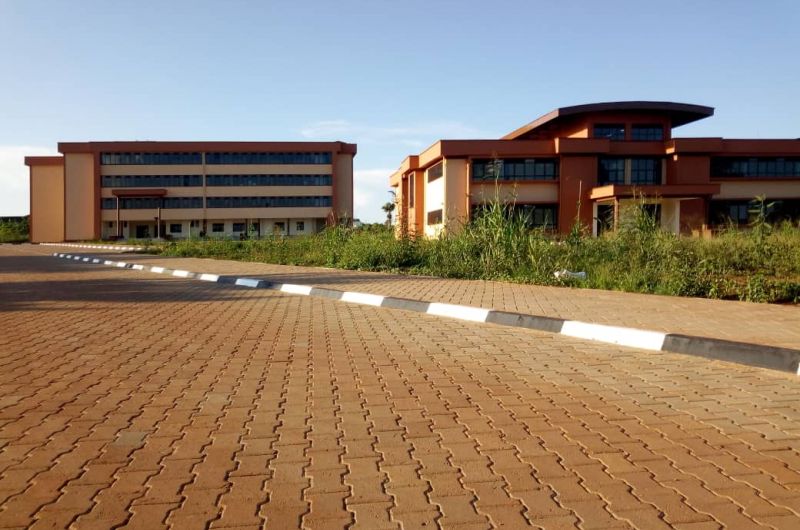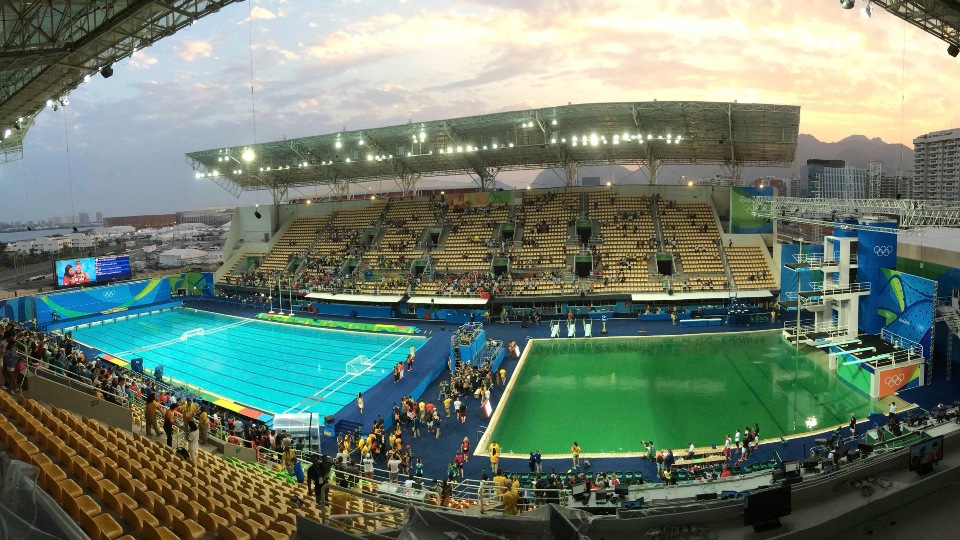Olympics is one of the greatest sporting events that have ever been organized and it every athelete's dream to stand and be counted at the events whose glory far out weighs any accolade in sporting history. With thousands of men and women expending every once of their strength for a place one the podium, alot of sacrifices have to be made at every attempt for glory
This year the city of Rio de janeiro is hosting the games and all the eyes of the world are on the city with every action, move under close observation from the world. As we may all know, it is not all rosy down there with the latest mishap being the Olympics diving pool waters turning green as opposed to their usual color of transparent blue which ofcourse is a cause for alarm
Officials at the games have been summoned to explain this very unusual occurance andfrom their explanation, one can say that it is a chemical equation gone bad. From the olden days of the periodic table in chemistry, we learnt that chlorine (A group 7 element) is used in the disinfection of swimming pools so that micro-organism like algae dont have a chance for habitation in the pool. The use of clorine gives the water that transparent blue color.
But what happens if another antispetic in the name of Sodium peroxide(NaOH) is used to kill bateria along side chlorine. Well according to the official at the olympics games, a local pool-maintenance worker mistakenly added 160 liters of hydrogen peroxide to the waters on August 5, which partially neutralized the chlorine used for disinfection. With chlorine disarmed, the officials said that “organic compounds”—i.e. algae and other microbes—were able to grow and turn the water a murky green in the subsequent days.
Susan Richardson, a professor of chemistry at the University of South Carolina and a former pool owner in her interview with livescience, asserted that If hydrogen peroxide were poured into a pool, it would quickly react with the chlorine-containing liquid bleach (NaOCl) in that pool and disable it,More specifically, hydrogen peroxide (H2O2) reacts with sodium hypochlorite (NaOCl) to form oxygen (O2), sodium chloride salt (NaCl) and water (H2O).As hydrogen peroxide reacts, it forms water (H20), and its signature bubbles, or fizz, which is really oxygen (O2) she further asserted
But here is the Irony, when Olympic officials monitored the pools, they found the proper amount of chlorine in the pools, but didn't know that the chlorine wasn't working, Gustavo Nascimento, director of venue management for the Rio Olympics, told the Times.
Nascimento further said it took a while to figure out what happened because hydrogen peroxide wasn’t supposed to be used at all, and it was not detected by initial tests. “The electronic monitoring system that measures the amount of chlorine in the water was betrayed by this chemistry,” he further said.
The bottom line here is Hydrogen peroxide can also be used to disinfect pools but must be maintained in the waters—not a one-time dumping—and can’t be used in combination with chlorine.
Clear Waters
It's likely that algae caused the green hue in the two Olympic pools, Richardson said. As someone who has owned a pool for more than 25 years, Richardson advised using large amounts of chlorine (called a chlorine shock) to get rid of the algae.
The chlorine shock kills algae, which die and fall to the bottom of the pool, she said. Then, the dead algae, which look like pieces of dirt, can be vacuumed up. The whole process would probably take about 24 hours for the Olympic-size pool, she added.
However, Rio officials opted for a faster solution, mainly so that the synchronized swimmers would have clear, blue water in time for their competition, the Times reported. Officials drained the 984,040-gallon (3,725,000 liters) pool with green water, and replaced it with clear water from a practice pool, the Times said. Nascimento, who spoke with the Times the day before the switch, estimated that it would take about 10 hours in total.
source * livescience.































